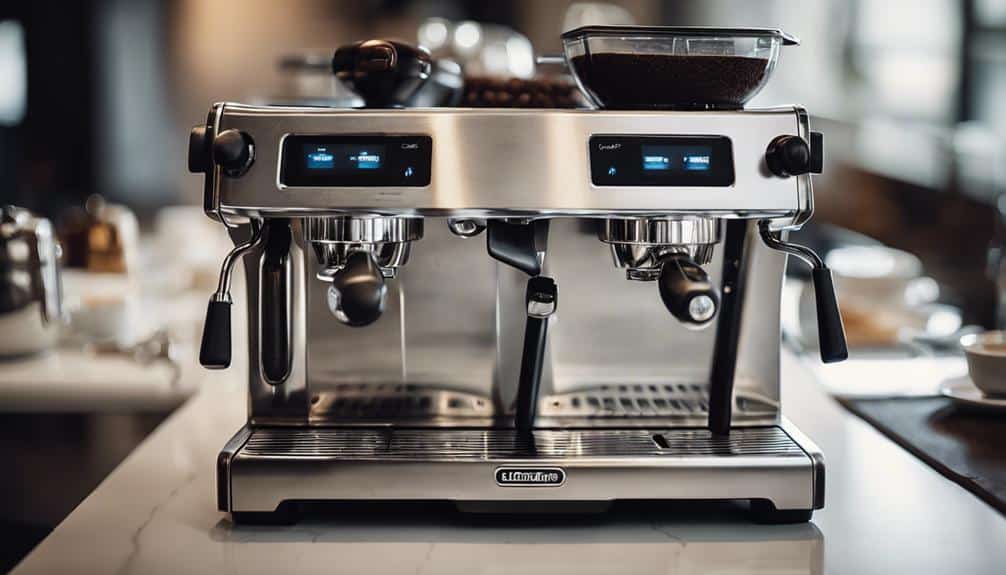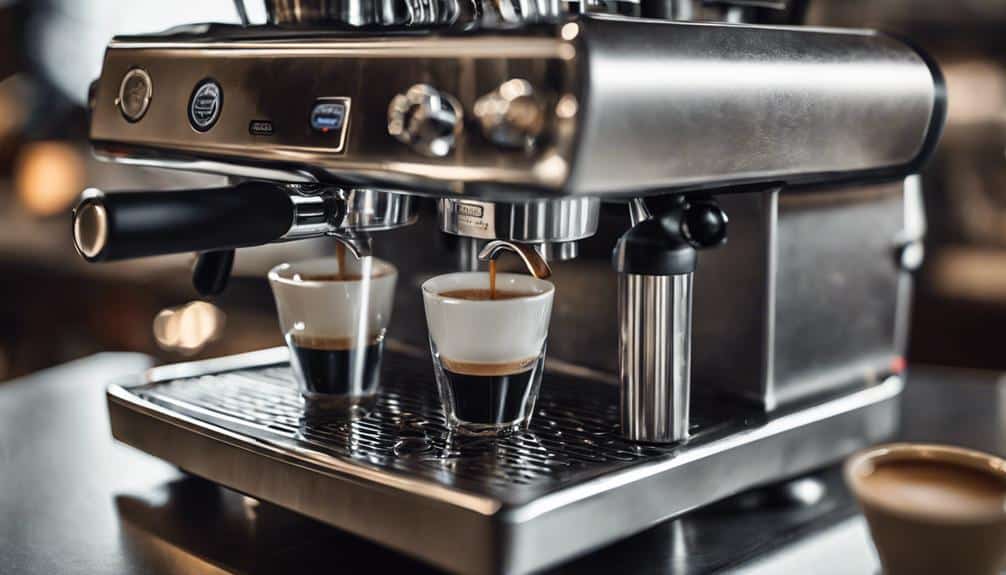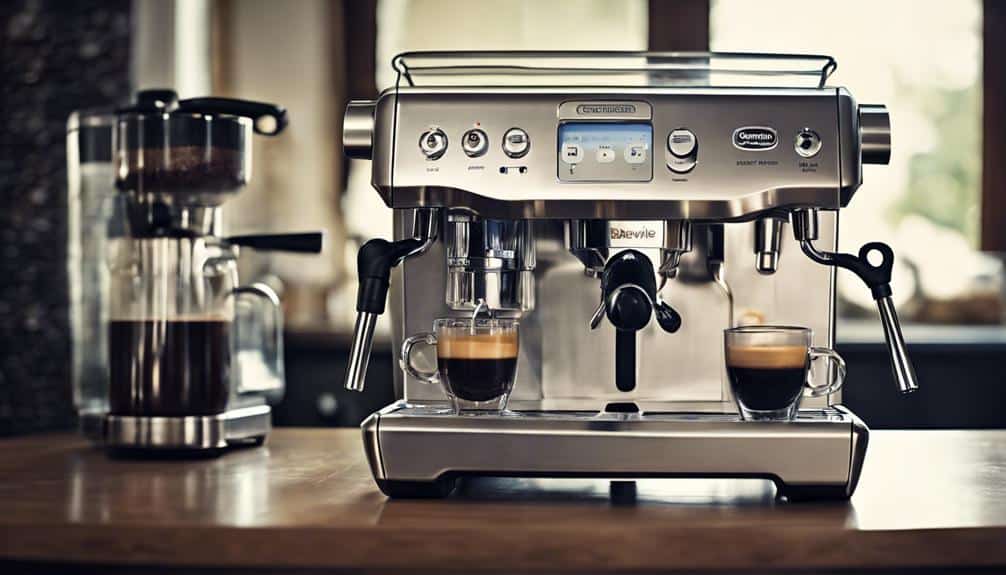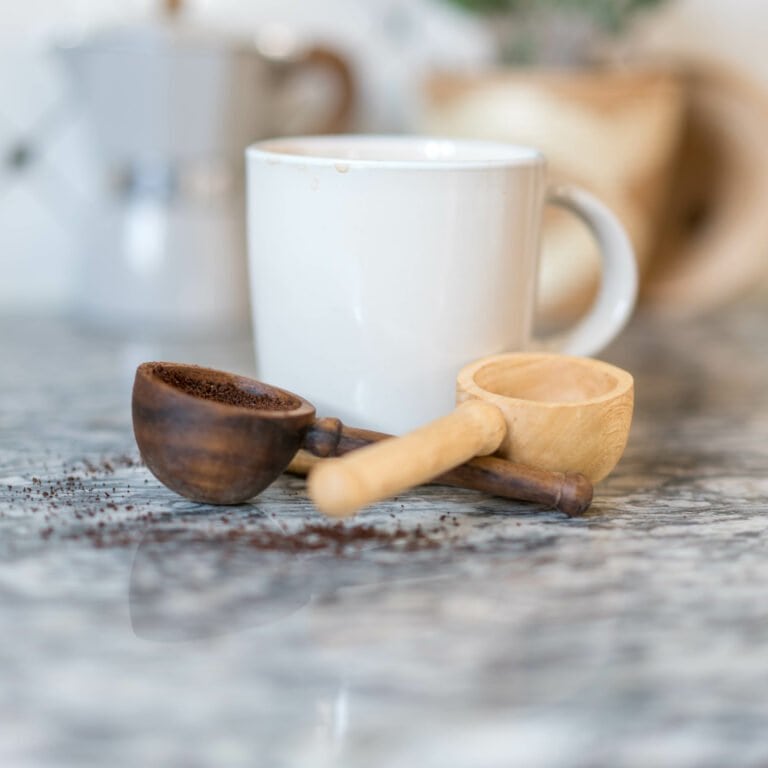Delonghi Versus Breville Comparison

In comparing DeLonghi and Breville espresso machines, I found intriguing differences worth exploring. From build quality to functionality, each brand brings unique strengths to the table. The discussion between these two industry giants highlights essential factors that could sway even the most discerning coffee connoisseur. The nuances in design, features, and performance set the stage for a compelling analysis of which brand reigns supreme in the domain of espresso perfection. Let's investigate the details to uncover the ultimate choice for your daily caffeine fix.
Overall Build Quality
When comparing the overall build quality of DeLonghi and Breville espresso machines, durability emerges as a defining factor due to the materials utilized in their construction. Breville espresso machines stand out for their sturdy construction, often featuring metal housing and durable stainless steel components. This emphasis on quality materials like stainless steel not only enhances the longevity of the machine but also contributes to its performance over time.
In contrast, DeLonghi machines may incorporate more plastic components in their build, potentially affecting their overall durability and reliability in the long run.
The choice of materials plays a significant role in determining the robustness of espresso machines. Breville's focus on utilizing stainless steel and robust construction techniques ensures that their machines exhibit a higher level of durability compared to DeLonghi models. While both brands offer reliable espresso machines, Breville's commitment to quality construction sets them apart in terms of longevity and reliability.
Grinder Functionality Comparison
Comparing the grinder functionality between DeLonghi La Specialita Arte and Breville Barista Express espresso machines reveals significant differences in grind settings and maintenance ease.
DeLonghi's La Specialita Arte is equipped with a built-in grinder offering limited grind size options, which can present challenges when working with different coffee roasts. In contrast, the Breville Barista Express features a burr grinder with 16 grind settings, providing enhanced customization for espresso brewing.
When it comes to grinder maintenance, DeLonghi requires intricate disassembly for cleaning, while Breville simplifies this task with a removable hopper. The Barista Express excels in offering a wider range of grind size options, allowing users to fine-tune their espresso shots more precisely.
On the other hand, users of the La Specialita Arte need to exercise caution when adjusting grind size due to the potential complexities involved. These differences in grinder functionality highlight the importance of considering individual preferences and brewing needs when selecting between these espresso machines.
Steam Wand Design Evaluation

The steam wand designs in the DeLonghi La Specialita Arte and Breville Barista Express espresso machines play a pivotal role in milk frothing and texturing for crafting espresso-based beverages.
- DeLonghi La Specialita Arte offers a non-burn steam wand design that enhances safety during operation and simplifies the cleaning process, providing users with convenience and peace of mind.
- Breville Barista Express requires immediate cleaning of the steam wand after use to prevent milk residue buildup, posing a slight inconvenience compared to DeLonghi's design.
- Users must exercise caution with Breville's steam wand due to its high operating temperature, necessitating careful handling to avoid safety risks.
Both machines rely on their steam wand design to create the desired milk texture for espresso drinks. While DeLonghi prioritizes safety and convenience in cleaning, Breville demands more immediate post-use attention and cautious operation. Users looking for ease of maintenance and enhanced safety features may find DeLonghi's steam wand design more appealing, whereas those comfortable with regular cleaning routines could still enjoy the Breville option.
Workflow Efficiency Assessment
The impact of solenoid valve inclusion on workflow efficiency distinguishes DeLonghi La Specialita Arte from the Breville Barista Express espresso machines. DeLonghi's lack of a solenoid valve results in a noticeable 1-minute delay between espresso shots, affecting the speed of preparing coffee drinks consecutively. In contrast, the Breville Barista Express, with its solenoid valve, provides immediate pressure relief post-extraction, allowing for seamless back-to-back preparation of espresso shots. This difference in workflow efficiency between DeLonghi and Breville machines directly influences the user experience, especially when needing to serve multiple coffee drinks efficiently.
The workflow on the DeLonghi machine may be slower due to the absence of immediate pressure release, impacting the overall speed of coffee preparation for multiple servings. On the other hand, the Breville Barista Express enables a more efficient workflow, making it ideal for users requiring swift espresso shot production in succession. Ultimately, the presence or absence of a solenoid valve has a notable impact on the workflow efficiency and user experience when using these espresso machines.
Espresso-Making Capabilities Analysis

In evaluating the espresso-making capabilities of DeLonghi and Breville machines, it becomes evident that each brand offers distinct features catering to various coffee preferences and brewing techniques.
Breville stands out with its emphasis on customization through features like built-in burr grinders with 16 grind settings, ideal for those who enjoy adjusting their coffee to precise specifications.
On the other hand, DeLonghi excels in convenience with programmable coffee quantity settings and a Thermoblock heating system for efficient brewing, appealing to those who prioritize ease of use.
Moreover, Breville's Oracle Touch model elevates the espresso experience with its dual boiler design, 45 grind settings, and hands-free auto grind and tamp functions, providing a professional-grade coffee experience at home.
- Breville focuses on customization through grind settings.
- DeLonghi emphasizes convenience with programmable settings.
- Breville's Oracle Touch model offers professional-grade features for espresso enthusiasts.
Long-Term Usability Considerations
Maintaining the long-term usability of coffee makers like DeLonghi and Breville involves regular cleaning and descaling to guarantee peak performance.
While DeLonghi machines may offer simpler maintenance requirements, Breville's advanced features could necessitate more intricate care over time.
Understanding the durability implications and user-friendly aspects of each brand is essential for sustained usability and enjoyment of your coffee maker.
Durability Over Time
Considering their reputation for longevity and reliability, both Breville and DeLonghi coffee machines are renowned for their durability over time.
- Both Breville and DeLonghi machines are constructed with durability in mind, ensuring long-lasting performance.
- Solid warranties and customer support from both brands offer reassurance for continued usability.
- Regular maintenance plays an important role in extending the lifespan of these coffee machines, ensuring consistent performance and quality coffee over the years.
With proper care and attention, users can rely on Breville and DeLonghi machines to deliver exceptional coffee experiences for an extended period, making them valuable long-term investments for coffee enthusiasts seeking lasting quality and performance.
User-Friendly Features
When seeking user-friendly features for long-term usability in coffee machines, one can appreciate the intuitive touchscreen displays and programmable settings offered by Breville models. Breville machines excel in providing customization options and advanced controls that cater to experienced users seeking a personalized coffee-making experience.
In contrast, DeLonghi machines prioritize simplicity with easy-to-use controls and straightforward operation, making them ideal for beginners and those valuing convenience. DeLonghi's focus on user-friendly designs, clear indicators, and simple interfaces guarantees a hassle-free experience for daily use.
Both Breville and DeLonghi consider long-term usability by incorporating features like easy cleaning systems, accessible maintenance components, and durable materials, contributing to extended product lifespan and overall customer satisfaction.
Conclusion
To sum up, both DeLonghi and Breville espresso machines offer unique features tailored to meet the needs of espresso enthusiasts.
While Breville excels in build quality and customization options, DeLonghi focuses on convenience and ease of use.
Ultimately, the choice between the two brands will depend on individual preferences and priorities, whether it be durability, customization, or user-friendly features.
Both brands deliver reliable products that prioritize longevity and customer satisfaction.





